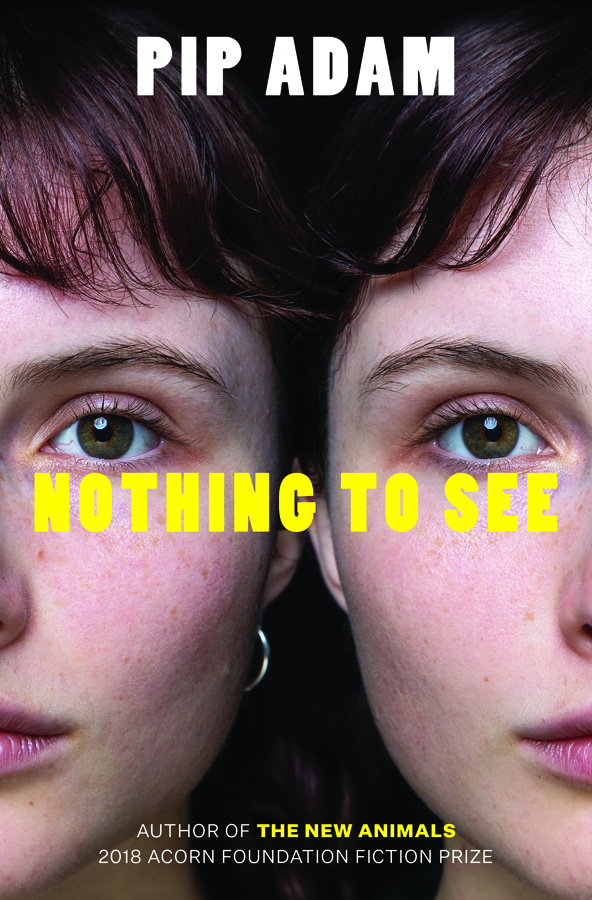No one who read Pip Adam’s Acorn Foundation Fiction Prize-winning novel The New Animals can forget the moment when an almost banal description of quotidian Auckland reality — this happens, that happens, she said this, he stood there — gave way to the uncanny or the fantastic. Few readers were prepared for the genuine shock as the story slipped from the real to the impossible or gave up worrying too much about categories like the real and the impossible. A similar kind of shock hits several times over in Adam’s third novel Nothing to See — and it’s not just strange or invigorating this time, it’s genuinely chilling and eerie. It’s more like a description of a haunting.
Adam writes in her generous afterword that winning the Acorn prize for The New Animals gave her the confidence to write this more ambitious, more original and, possibly, more divisive novel. We should be pleased about that. It’s a reminder that prizes are not just recognition and (for a day or two, if you’re lucky) publicity, but are also validation. An admission: I was one of the four judges who picked The New Animals for the prize that year. I don’t remember it being a hard decision.
We heard a lot about haircuts and T-shirt design in The New Animals, about fashion world hierarchies based on work, age and class. Nothing to See pays greater attention to overlooked and unglamorous work, the work that is in danger of being automated, rendered post-human — sorting clothes in warehouses, working in call centres, even moderating comments on websites. There is a political edge to this attention which might not be quite as explicit as Adam thinks it is (the publisher calls this a novel about surveillance capitalism, which explains the title). The slightly satirical political edge and a leaning towards the fantastic and the playful, combined with an absence of the usual emotional cues or interiority some readers expect or even demand from fiction, can be reminiscent of what José Saramago was doing in novels like The Double and Death at Intervals.
Careful symmetry is key to Nothing to See. There are three sections, set at 12-year intervals, in what appear to be New Zealand’s three main cities. When the story begins, in 1994, Peggy and Greta are in their early twenties and living together in one room, while a pair named Dell and Heidi are living in another. There is an uneasiness from the start: are Peggy and Greta friends or lovers or sisters or even twins? We do know that both are alcoholics in rehab, living in a very accurately described poverty — scraping together enough coins to buy one meal for two, and sharing seven socks between them (“None matched”). Figuring out how to cook a quiche or even go to the supermarket is a major breakthrough. There is a terrible boredom in the sober life but of course it’s better than the alternative. “They still had nightmares. Woke up gasping.”
It’s impossible to describe much more without spoiling the surprises — or shocks. But we can say that Adam has advanced even further as a writer. There is an evenness to her writing that is hypnotic rather than monotonous, steady rather than flat, and the sustained melancholy recalls the sadder end of science-fiction — films like Her and Never Let Me Go. At its heart, this is a novel about shame, loneliness, about wanting to do good and hoping for second chances — or third or fourth chances. It’s about finding new ways of being. That it can cover all this, and be deeply affecting as it does so, while also pushing at the traditional limits of fiction, is a real achievement.
This review was originally published on the Academy of NZ Literature site.



